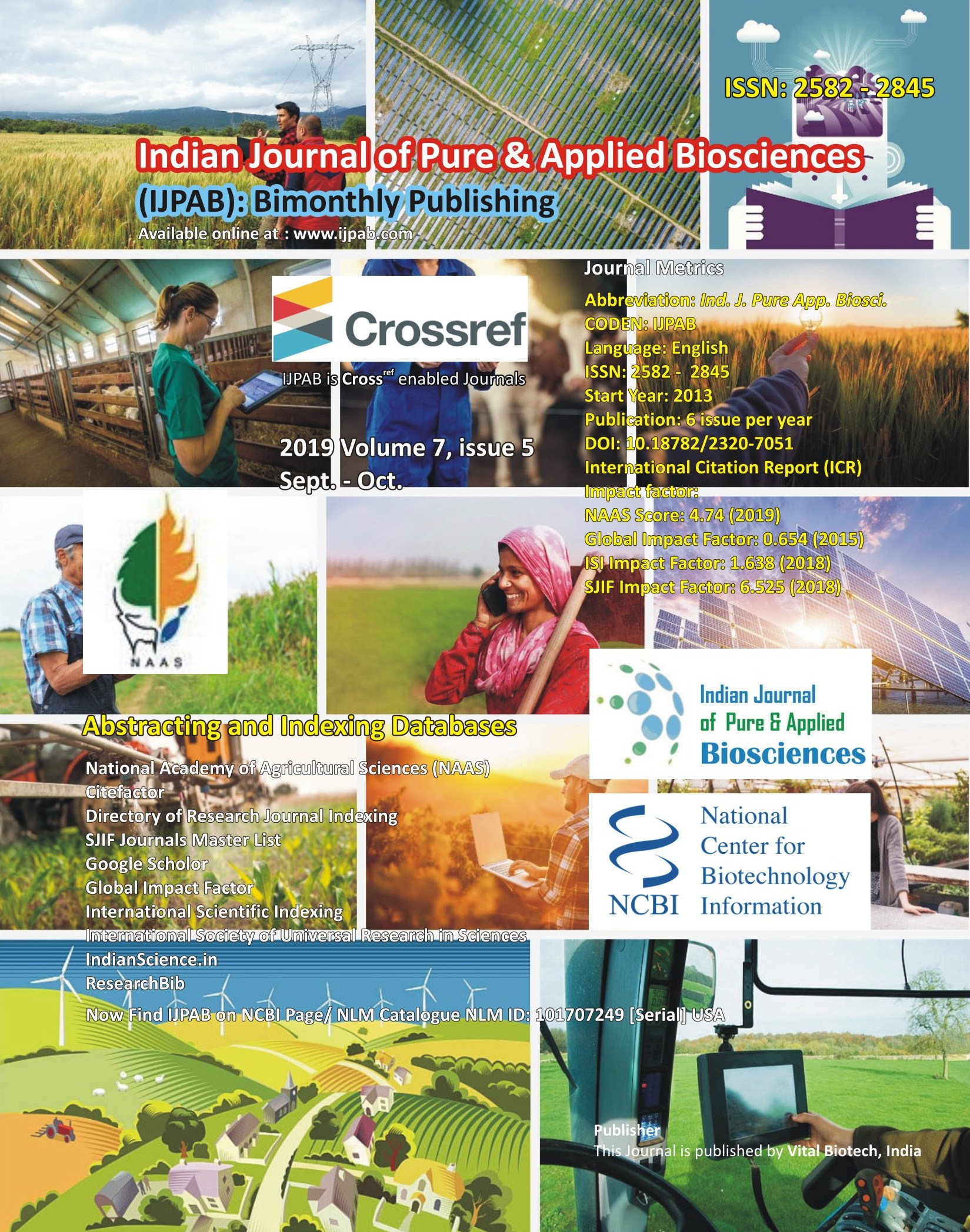
-
No. 772, Basant Vihar, Kota
Rajasthan-324009 India
-
Call Us On
+91 9784677044
-
Mail Us @
editor@ijpab.com
Indian Journal of Pure & Applied Biosciences (IJPAB)
Year : 2019, Volume : 7, Issue : 5
First page : (314) Last page : (326)
Article doi: : http://dx.doi.org/10.18782/2320-7051.7851
Influence of Nickel Treatment on Antioxidant Responses and Secondary Metabolite Production in Eryngium foetidium Linn.
Manjunatha L.1,2 Vadlapudi Kumar1*, Torankumar Sannabommaji1, Poornima D.V.1, Rajashekar J.1 and Hari Gajula1
1Department of Biochemistry, Davangere University, Shivagangothri, Davangere – 577007 Karnataka, India
2Regional Office, Karnataka State Pollution Control Board, Dharwad – 580004 Karnataka, India
*Corresponding Author E-mail: veeke2012@gmail.com
Received: 14.09.2019 | Revised: 20.10.2019 | Accepted: 27.10.2019
ABSTRACT
The present study was carried out to explore the heavy metal nickel tolerance potential in Eryngium foetidum Linn., belongs to the Apiaceae, the plant with culinary importance, and influence of nickel on secondary metabolites production. Twenty five day old seedlings/plants of E. foetidum were treated with three different concentrations of nickel (50 ppm, 100 ppm and 200 ppm) in the form of nickel sulphate (NiSO4) for five days. After nickel treatment, plant growth was monitored by determining shoot length, root length, fresh and dry weights of leaves/shoots and roots, and also quantitative determination of chlorophyll pigments and L-proline. Nickel at all tested concentrations affected the plant growth compared to control group of plants. Significant increase in L-proline concentration was observed in the Ni-treated plants compared to respective controls. Accumulation of nickel was more at rhizosphere compared to aerial parts. Nickel treatment elevated the superoxide disumutase activity and malondialdehyde content at all the concentrations tested. While catalase activity was found to be increased at 50 ppm and 100 ppm concentrations of Ni, and activity slight decrease in activity at 200 ppm. Results of leaf phytochemical analyses suggest that, nickel has increased the production and accumulation of phenolics, flavonoids and saponins. There is a direct correlation observed between accumulation of nickel and phytochemicals in leaves. Nickel might have induced the production of phytochemicals in E.foetidum leaves. The plant has metal heavy tolerance, and nickel at low concentrations can be used as an elicitor for the production of secondary metabolites in E. foetidum.
Keywords: Eryngium foetidum Linn., Nickel treatment, Biochemical changes, Secondary metabolites.
Full Text : PDF; Journal doi : http://dx.doi.org/10.18782
Cite this article: Manjunatha, L., Kumar, V., Sannabommaji, T., Poornima, D.V., Rajashekar, J. and Gajula, H., Influence of Nickel Treatment on Antioxidant Responses and Secondary Metabolite Production in Eryngium foetidium Linn., Ind. J. Pure App. Biosci.7(5), 314-326. doi: http://dx.doi.org/10.18782/2320-7051.7851

